Address
304 North Cardinal St.
Dorchester Center, MA 02124
Work Hours
Monday to Friday: 7AM - 7PM
Weekend: 10AM - 5PM
Welcome to My Blog!
Before we dive into the content, if you’re interested in our products or have any questions, please feel free to visit our Contact Us page on the website. Our team is ready to assist you with inquiries, orders, or any support you may need.
Now, let’s get started on our journey together. I hope you find the content here insightful, engaging, and valuable.
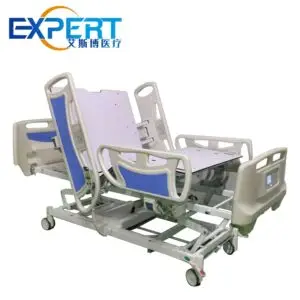
Choosing the right hospital bed size is crucial for patient comfort, safety, and recovery. A bed that is too small can restrict movement, increase the risk of pressure sores, and make it difficult for caregivers to provide proper care. On the other hand, a bed that is too large can take up valuable space and make it difficult for patients to reach essential items. This comprehensive guide will delve into the various aspects of hospital bed sizes, helping you make an informed decision for optimal patient care.
A properly sized hospital bed directly impacts patient comfort. A bed that is too narrow can cause discomfort and restrict movement, potentially leading to pressure ulcers. Sufficient space allows patients to change positions comfortably, promoting better circulation and reducing the risk of complications.
The size of the hospital bed also affects caregiver efficiency. A bed that is too small can make it difficult for caregivers to assist patients with transfers, repositioning, and other essential tasks. Adequate space around the bed is crucial for caregivers to maneuver equipment and provide effective care.
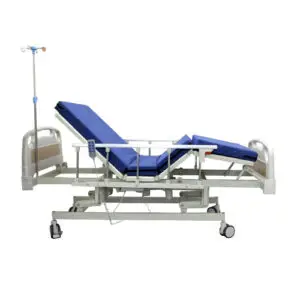

Standard hospital beds typically measure 36 inches wide and 80 inches long. However, various sizes are available to accommodate different patient needs. Understanding these dimensions is essential for selecting the appropriate bed.
The most common hospital bed widths are 36 inches, 39 inches, and 42 inches. The 36-inch width is considered standard, making it the most widely used option in hospitals and care facilities. The 39-inch and 42-inch widths offer additional space for larger patients or those who require more room to move, ensuring greater comfort and reducing the risk of pressure sores. Choosing the right bed width can improve patient outcomes by enhancing mobility, comfort, and overall care experience.
The standard hospital bed length is 80 inches, which accommodates the average adult patient comfortably. For taller patients, bed extensions are available to increase the length and ensure proper support, preventing their legs from hanging over the edge. These extensions typically add 4 to 8 inches, making the bed more suitable for patients over 6 feet tall. Ensuring the right bed length helps in maintaining proper spinal alignment and reducing the risk of discomfort or injury.
Bariatric hospital beds are designed to accommodate patients with higher weight capacities, providing the necessary support for individuals with obesity or other conditions requiring reinforced frames. These beds typically have wider and reinforced structures to ensure stability, with widths ranging from 42 inches to 60 inches and weight capacities exceeding 700 pounds. The extra space and durability of bariatric beds help prevent falls, improve patient comfort, and support caregivers in providing safe and efficient care.
Several factors should be considered when choosing a hospital bed size, including patient size, mobility, and specific medical needs. The right bed size ensures that the patient receives optimal care, remains comfortable, and avoids complications such as bed sores or restricted movement. Additionally, factors like room space, caregiver access, and compatibility with medical equipment should be evaluated to create the most effective care environment.
Patient size and weight are primary considerations when selecting a hospital bed, as an ill-fitting bed can compromise comfort and safety. The bed must be able to support the patient’s weight comfortably and provide adequate space for movement, reducing the risk of pressure ulcers and musculoskeletal strain. Beds designed for heavier patients should feature sturdy construction, reinforced side rails, and specialized mattresses to enhance support and durability.
Patient mobility and positioning needs also play a crucial role in determining the appropriate bed size, particularly for those who have difficulty moving independently. Patients with limited mobility may require a wider bed to facilitate repositioning and prevent pressure sores, as well as features like adjustable height and side rails for easier access. Advanced hospital beds with electronic controls allow caregivers to adjust positioning easily, ensuring that patients remain comfortable and properly aligned during treatment and recovery.
Certain medical conditions and treatment requirements may necessitate specific bed sizes to provide the best care and support. For example, patients with respiratory conditions may benefit from an adjustable bed that allows for elevation, helping to improve breathing and reduce discomfort. Similarly, those recovering from surgery or suffering from chronic pain may require a bed with customizable positioning to alleviate pressure on certain areas of the body. Selecting the right hospital bed based on medical needs ensures a safer and more effective healing process.

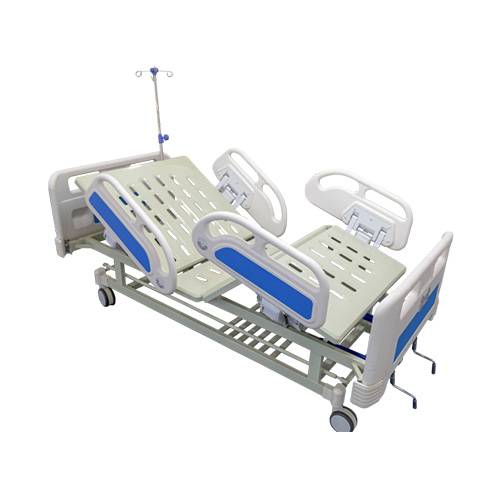
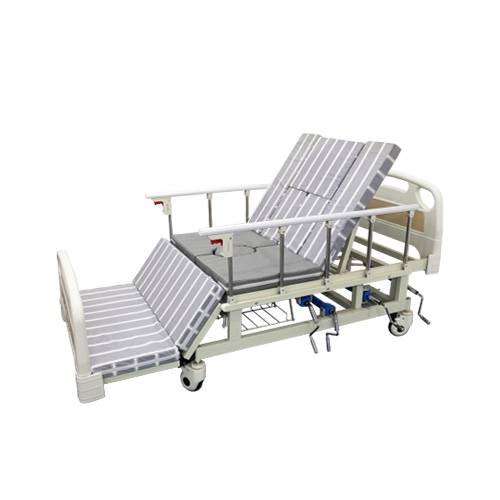






Different hospital bed frame types can also influence size considerations.
Manual hospital bed frames offer basic functionality and come in standard sizes.
Semi-electric hospital bed frames offer some adjustability, such as head and foot elevation, which can impact the overall bed size.
Full-electric hospital bed frames offer advanced adjustability, including height adjustment, which can influence the space required for the bed.
The following table provides a detailed overview of different hospital bed sizes and their typical applications:
| Bed Type | Width (inches) | Length (inches) | Typical Applications |
|---|---|---|---|
| Standard | 36 | 80 | General use, most patients |
| Wide | 39 | 80 | Larger patients, patients requiring more space to move |
| Extra-Wide | 42 | 80 | Larger patients, patients requiring maximum space to move |
| Bariatric | 48-54 | 80-88 | Patients with higher weight capacities |
| Extra Long | 36-42 | 84-90 | Taller patients |
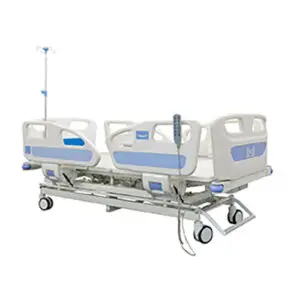
Choosing the correct mattress size to match the hospital bed size is vital for ensuring patient comfort and preventing safety hazards.
A mattress that is too small can create gaps between the mattress and the bed frame, posing a risk of entrapment, which can lead to serious injuries, especially for patients with limited mobility. A mattress that is too large can overhang the bed frame, making it unstable and increasing the likelihood of falls or improper weight distribution. To ensure patient safety, it is crucial to select a mattress that fits snugly within the bed frame while allowing for proper attachment of side rails and other support accessories.
A properly sized mattress ensures optimal pressure redistribution, which is essential for preventing pressure sores and enhancing patient comfort during extended periods of bed rest. Pressure sores, also known as bedsores, can develop when pressure is concentrated on certain areas of the body, leading to tissue damage and pain. By using a mattress designed for even weight distribution, such as one with memory foam or alternating pressure air technology, patients can experience better support, improved circulation, and reduced risk of skin breakdown.
Mattress thickness also plays a role in comfort and support, as it directly impacts how well the mattress conforms to the patient’s body and relieves pressure points. Standard hospital bed mattresses are typically 6 inches thick, but other thicknesses are available depending on patient needs, ranging from 4-inch low-profile options for better stability to 8-inch or thicker models for enhanced cushioning. The choice of thickness should consider patient weight, medical conditions, and the type of bed frame to ensure compatibility and overall well-being.
Choosing the right hospital bed size is a critical decision that impacts patient comfort, safety, and care. By considering factors such as patient size, mobility, medical needs, and bed frame type, you can make an informed choice that promotes optimal outcomes.
What is the standard size of a hospital bed?
The standard size of a hospital bed is 36 inches wide and 80 inches long.
What size hospital bed do I need for a bariatric patient?
Bariatric patients require specialized beds with wider and reinforced frames. These beds typically range from 48 to 54 inches in width and 80 to 88 inches in length.
How do I choose the right mattress size for a hospital bed?
The mattress size should match the bed frame size to prevent gaps and overhangs. Standard hospital bed mattresses are typically 6 inches thick.
What are the benefits of choosing the right hospital bed size?
Choosing the right hospital bed size offers numerous benefits, including improved patient comfort, reduced risk of pressure sores, enhanced caregiver efficiency, and better overall healthcare outcomes.
Does hospital bed size affect the type of linens I need?
Yes, you will need linens that are appropriately sized for the hospital bed you choose. Standard, wide, and bariatric beds all require different sized sheets and blankets.
